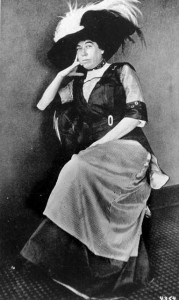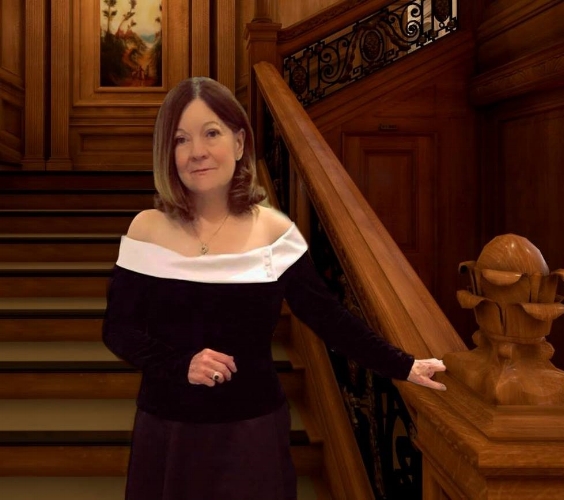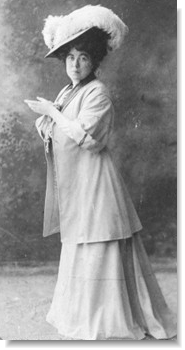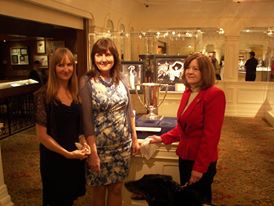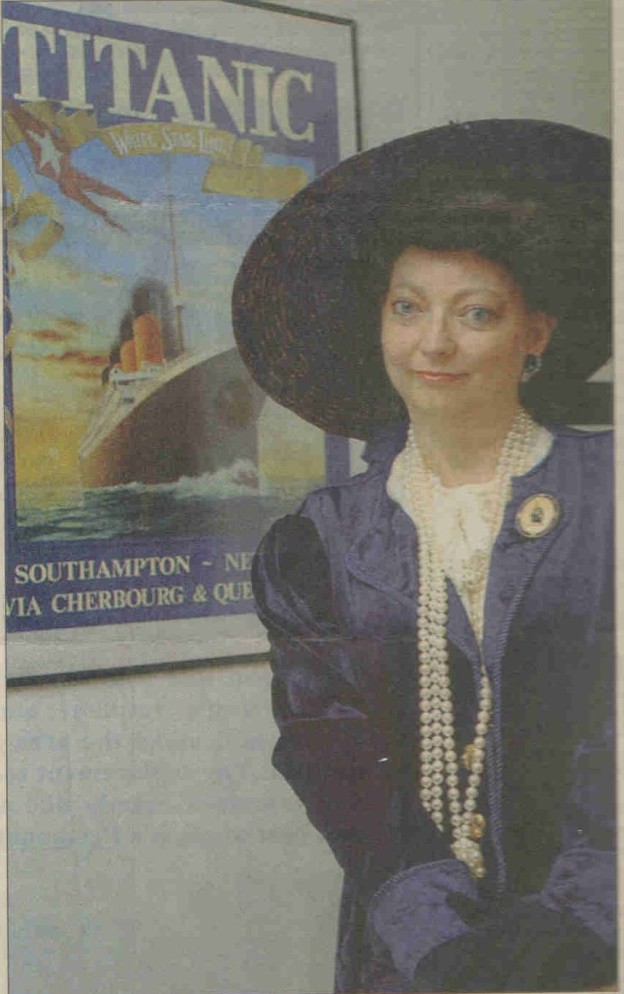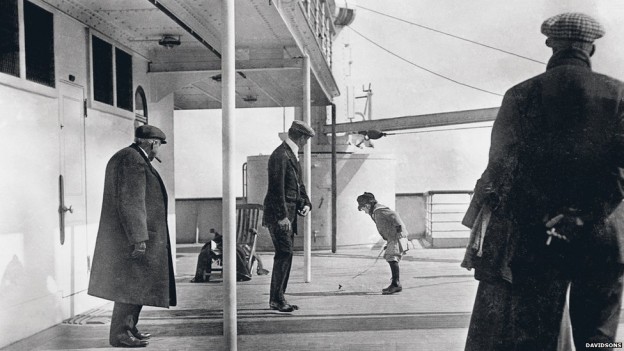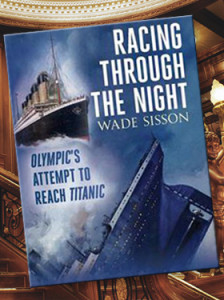Kyrila Scully shares stories of strength and survival from the Titanic disaster.
By Peter Hawkins, special correspondent
Sun Sentinel
If you’re passing the band shell at Old School Square in Delray Beach one Saturday afternoon in May, you might see a lady wearing an Edwardian long satin dress topped by a wide-brimmed hat set on a rakish angle, describing her miraculous escape from the Titanic.
It’s none other than Kyrila Scully of Boynton Beach, portraying the “Unsinkable” Molly Brown, perhaps the most colorful survivor of the mighty liner that sank 90 years ago this month.
Scully is so steeped in the most famous maiden voyage since Noah launched his ark, that school children call her the “Titanic Mom.” She will again impersonate Molly–or Margaret Brown as she was known in her lifetime–May 18 as part of Delray Beach Preservations Week.
Scully, 47, takes her “Titanic Nights”** exhibition to schools, churches, condos and civic events, and writes and performs monologues about the survivors. In addition to playing Molly Brown, she impersonates first-class stewardess Violet Jessop and second-class passenger Lutie Parrish in her best Kentucky accent:
“Thee, lawd! Look at all the people here today!” she exclaims. “Welcome aboard! I’m Mrs. Samuel Parrish, but you can call me Lutie.”
“She’s in total character when she plays these people,” said Sandra LaHair, who runs an Edwardian and Victorian costume business with Scully called Grand Staircase.
Scully is self-publishing TITANIC: THE SURVIVORS–A MANIFEST OF THE LIFEBOATS this month. The book places survivors in lifeboats and traces the stories of their escape from the doomed ship, which started to sink on April 14, 1912, and went down after midnight.
Also this month, Scully and LaHair are leading a party to mark the anniversary of the tragic voyage with special events at the Orlando museum, TITANIC–SHIP OF DREAMS. The lease on the museum, which features a full-scale recreation of the ship’s grand staircase, ends in August, and Scully is campaigning to move it to Palm Beach County. The museum hasn’t found a suitable location yet.
For LaHair, the sinking has a message for today.
“People lost their lives foolishly out of pride,” she said. “It was touted as unsinkable, as if to fly in the face of God. They thought God couldn’t sink her. Well, he could.”
Scully sees the parallel with the events of Sept. 11.
“There are so many correlations with 9-11,” she said. “It says a lot about the arrogance of technology. It’s similar to the Challenger disaster, too. In each case, ice warnings were ignored. Ice brought down the Challenger and ice brought down the Titanic.”
Scully has been interested with the vessel for almost 40 years. Her condo in Boynton Beach is like a shrine to the liner, with a life belt that was a prop for the film, TITANIC, scale models of the ship, and memorabilia that includes two tiny pieces of coal brought up from the seabed of the wreck.
In a curious way, the preoccupation was her lifesaver. At the age of 8, she went through a traumatic experience she still can’t talk about. Two things in 1964 helped her: One was the Beatles. The other was a movie about the disaster, A NIGHT TO REMEMBER. She got over the Beatles, but she’s still under the Titanic’s spell.
“It was inspirational,” she said. “I thought, if they could survive that, I could survive what I was going through.”
Through the Titanic, she has helped students see their way through personal crises. Scully answers students’ questions on a Titanic Web site.
“I’ve shown how the Titanic helped me to cope with problems I had growing up by showing them life lessons from the Titanic.”
** (Kyrila’s note: The name TITANIC NIGHTS has been changed to TITANIC IMPACT PERFORMANCE EXHIBITS. Also—not true—I didn’t “get over” the Beatles. I’m still a big fan.)
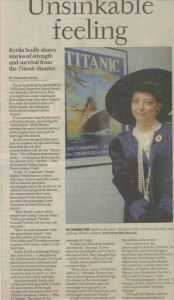
Photo by Staff Photographer Mark Randall
[metaslider id=286]
